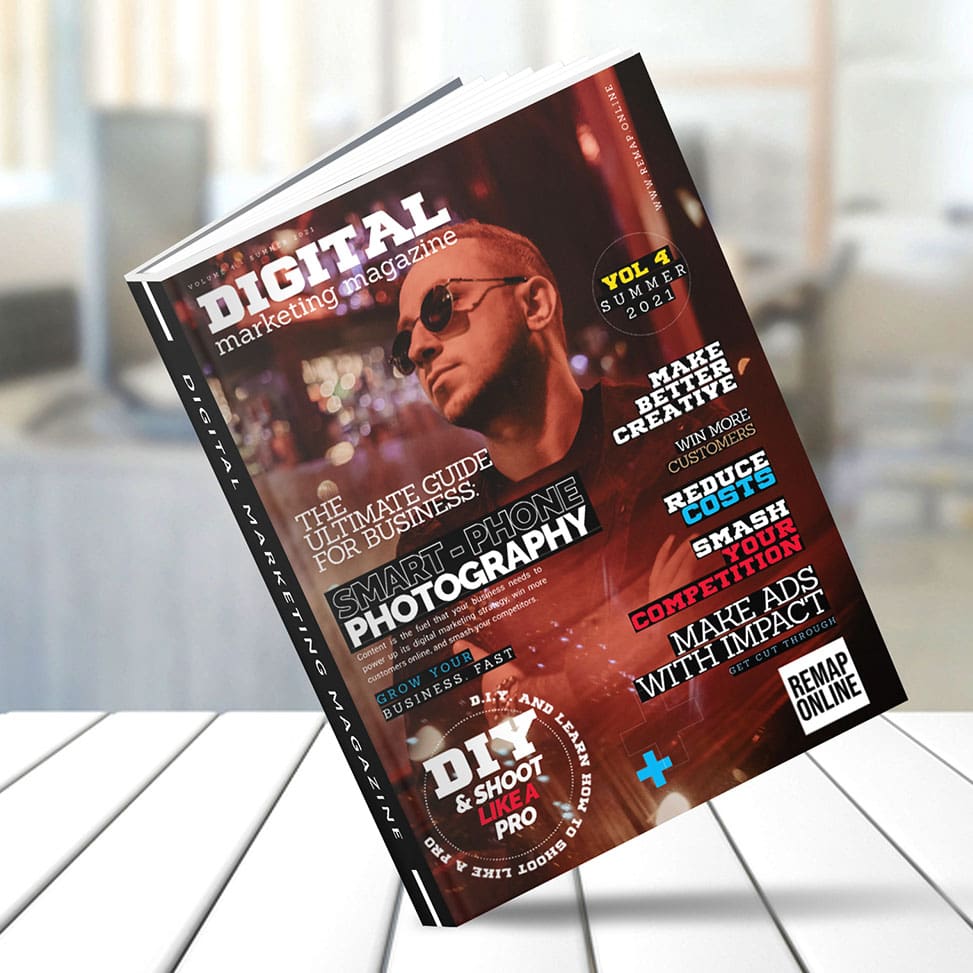Of course, there are a few reasons that we already know, like mobile being the dominant screen of our time and the risk of ‘scrolling by’ being constantly present.
But once you pop the hood on this report and look at the information inside, you can see that Facebook isn’t just skimming the surface of the subject with these insights. Instead, they are much, much more profound.
Andrew Keller backs up his argument using four main points that are exceptionally well researched and thought through.
- Content consumption on mobile is non-linear.
- Facebook and especially Instagram, are visual first.
- Mobile consumption is not TV consumption
- Different mindsets mean different perceptions
While we highly recommend reading the Report for yourself, or this article from the team at Inside Small Business. But we know many of you are pressed for time, so here’s a quick summary of the main points for you.
Content Consumption on Mobile is Non-Linear
Whether you’re watching your favourite show on television or reading a book, the stories and content used in these traditional channels follow the same pattern. I.e., the content is “linear”.
A book, for example, is made up of Chapters. The story works best when you read the entire piece cover to cover, from start to finish.
While your binging shows on Netflix, you’ll notice each show is made up of a Series, and each Series consists of a sequential number of Episodes. Again, the stories are designed to work best when watching an entire series from start to finish (and let’s face it, in lockdown who didn’t!)
All of this content follows a linear pattern. That is, the content is designed to do one thing – keep you engaged. Publishers of magazines will call this “dwell time” and boast it to advertisers as the length of time someone will spend on average going cover to cover. In their business model, the longer, the better.
This linear content experience (reading, watching, viewing or browsing – whatever you want to call it) has been significantly disrupted by mobile.
Mobile technology has created a completely different dimension. Platforms are a space for content curation.
In this space, it is the consumers (or users) who drive the technology forward. Not the Publisher or Media owner.
The brands leading the way for advertising on mobile accept that mobile is a free environment over which they have little control (compared to their users). Their content is structured to allow consumers to move back and forth through it quickly and easily.
I.e., it is “non-linear.”
For example: Imagine a story where;
- Chapter 3 does not have to follow Chapter 2.
- Episode 9 still makes sense if you haven’t seen Episode 8.
- & Series 2 can be watched and enjoyed before you’ve even seen Series 1.
- Etc
That’s non-linear content and storytelling. It’s not easy to get your head around. But that’s how I win on mobile.
Facebook & Especially Instagram are Visual-first Platforms
The common language that we all use on mobile today isn’t “English”… it’s Visual.
Over the last decade, there has been a significant shift in the type of content people consume and share. The recent report outlines that the most successful apps in the App Store today don’t use text. They primarily use videos, photos or are otherwise visual-based.
For instance, Facebook and Instagram (are some of the worlds most famous Apps), and all of these are visual-first platforms.
As revolutionary camera technology has been embedded into smartphones, using photos & videos for everyday communication has become a seamless task.
For instance, Facebook launched Live Video to promote video-first consumption. Since its launch, the number of viewers using the Live Video feature grew by over 400% and has now become a global trend.
While traditionally, visual content was all about sight, sound, and motion, the portability of mobile has given rise to watching video with the sound off. Sight & motion are now the pillars of visual-first communication.
Marketers have started to realise that ads on mobile don’t always have to be in the Direct Response category. Harnessing the power of mobile visual language doesn’t always mean you need to put your product or service in the centre of the screen. Instead, Ads can convey their brand or marketing message by simply linking their logo with an emotive image, allowing the user to translate the meaning through visualisation.
This technique is straightforward but very effective.
Marketers are also coming up with new, innovative approaches to designing interactive visual-based ads that work best in the mobile environment, with the sound off.
Mobile Consumption is Not TV Consumption
There’s a stark difference between the way we consume content on the mobile screen that we hold in the palm of our hand and that of a TV screen that sits far away.
The physical difference in how we use these screens creates very different experiences. If you view the same piece of content on TV and then again on mobile, you will have a very different set of cognitive reactions to it.
A recent study called “Project Prime Time” by Advertising Psychology firm Neuro-Insight aimed to understand how people perceived content whether they viewed it on TV or their Smartphone.
It revealed that people had a stronger emotional reaction and higher levels of cognitive engagement while consuming content on their smartphones.
On the other hand, while watching TV, people revealed higher levels of distraction and an increased cognitive load because of the shared nature of watching television in a room where other things are going on.
The study concluded that consuming content on smartphones is very distinct from consuming the same content on TV.
Most advertisers have only just begun to recognise this and are now working towards improving the viewing experience of their mobile ads.
If they’re planning and shooting their video content vertically rather than landscape, it’s a significant first step.
Different Mindsets Imply Different Perceptions
Just like Channel 9 and SBS are different TV channels, other mobile-based platforms also offer very different experiences.
The look and feel of content on Facebook are very different to the look and feel on Instagram.
While the same company owns both platforms (and technically) you can mirror the content published on one to the other, they are still very different platforms.
This is true both in terms of audience (i.e., demographics) and the mindset of that audience when they’re on the platform.
A recent study found that most people tend to use Facebook for satisfying their need to establish human connections and gain recognition.
On the other hand, people using Instagram intend to unwind themselves and discover new content.
The study also analysed the impact every platform tends to have on ad perception. It found that ad descriptions using terms like ‘high-quality’ and ‘beautiful’ were rated much higher on Instagram than on Facebook.
Whereas terms like ‘uplifting’ and ‘imaginative’ were rated the same across both platforms.
People use different apps for different purposes.
The ultimate choice of a particular app indicates a specific mindset – advertisers need to recognise that and play to each platforms’ strengths.



